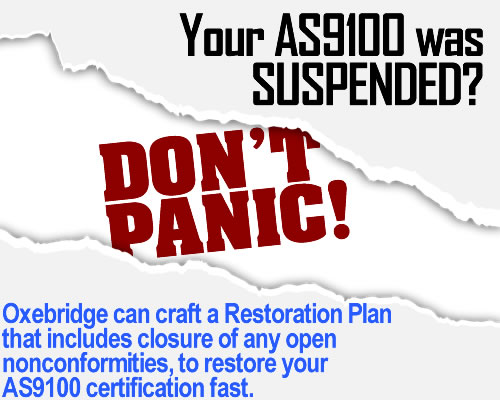From Charles Corrie to Roger Frost to  numerous TC 176 reps, right up to TC 176 Chair Dr. Gary Cort, the talking point is that ISO must follow its established procedures when developing international standards. Using this mantra, they avoid being confronted with criticism from actual, paying purchasers of ISO 9001 or end users of certification services. They only get the feedback of volunteers working through their national member bodies. By limiting feedback only to volunteers — people who elect to spend their own money to participate — they guarantee a near-total pool of individuals in agreement, and effectively filter out any critics.
numerous TC 176 reps, right up to TC 176 Chair Dr. Gary Cort, the talking point is that ISO must follow its established procedures when developing international standards. Using this mantra, they avoid being confronted with criticism from actual, paying purchasers of ISO 9001 or end users of certification services. They only get the feedback of volunteers working through their national member bodies. By limiting feedback only to volunteers — people who elect to spend their own money to participate — they guarantee a near-total pool of individuals in agreement, and effectively filter out any critics.
It’s a convenient trick, and one that flies in the face of so many of ISO’s own standards (like 9001, 17011, 17021 and 10002) which all emphasize the importance of obtaining feedback from stakeholders in whatever manner and form they take.
Now, development of ISO 9001:2015 seems to point out that ISO doesn’t even follow its own procedures, when publication dates and the resulting sales are affected.
By now it’s no secret that a number of participants in ISO TC 176 are disgruntled, and are happy to use me as a sounding board, since I have no qualms about putting my name on these things. So I get a steady stream of “inside” information on the inner workings, and grumblings, of the various Working Groups. Some of it has to be discarded, some has to be vetted, but other stuff comes from such high-ranking individuals, you cannot dismiss it.
Rules Are Made to be Broken
Word has now come in from several sources that in order to hit milestone dates established about two years ago … before serious development on 9001:2015 began … TC 176 is skipping a critical review step on its second Working Draft (WD2) and pushing right to the Committee Draft (CD), without addressing any of the concerns of WD2, and ignoring most of them from WD1 (the one that was leaked, and met with such hostile criticism.)
Normally, procedures would require the full participation of TC 176 member nations in collecting and analyzing the feedback of each draft before it progresses to the next stage. This is an admittedly clumsy requirement, and time-consuming, but it exists nonetheless. However, in order to hit the target of publishing the CD by mid-June — just a few weeks from now — the feedback from WD2 is being ignored entirely, and will be rolled into the feedback analysis of the rushed CD.
That’s violation of procedures # 1.
Then, in order to ensure what TC 176 is, itself, calling a “fast track process,” rather than engage an appropriate number of ISO member nations to develop the CD, it is being written by a “small, select group” of individuals, who have not been elected and do not represent the overwhelming bulk of ISO member nations or TC 176 participants.
That’s violation of procedures # 2.
This is not only unnecessary, it guarantees some very, very negative energy for ISO. First, members who thought they were spending their money and representing their countries to develop ISO 9001 find that unless they were among the 5 – 10 handpicked “select members”, their views have been shut out.
Second, it embarrasses the TC 176 leadership, including Dr. Cort, who just made such a point about adhering to “ISO ideals of democratic, consensus-based standards development.” By attaching his name to that statement at the very moment TC 176 is abandoning democratic, consensus-based activities in favor of hitting a deadline, the angered members of TC 176 know who, personally, to address their rage at.
Finally, when names of that select group are revealed (and trust me, someone will leak them), if the feedback for the CD is as bad as that of the WD1, then those individuals will be held responsible, and will lack the collective shield of TC 176 members to hide behind.
Now lets hope the CD shapes up, and we have something that shows the problems of the WD were addressed. Because the next step is a rush from CD to FDIS, and that means people (like Jack West) start publishing books about how to implement it. Once that happens, very little is changed between FDIS and the final released International Standard.
If this happens according to schedule, then the lack of proper consensus participation will have infected nearly the entire 9001 development process, and the majority of content of the resulting 9001:2015 will have been the product of perhaps as many as 10 people.
So much for procedures.
(Those concerned with sending tips or information about TC 176 or ISO 9001 can do so using an anonymous email account, making identification of the sender impossible. Address your emails to OQR@oxeridge.com.)
Christopher Paris is the founder and VP Operations of Oxebridge. He has over 35 years’ experience implementing ISO 9001 and AS9100 systems, and helps establish certification and accreditation bodies with the ISO 17000 series. He is a vocal advocate for the development and use of standards from the point of view of actual users. He is the writer and artist of THE AUDITOR comic strip, and is currently writing the DR. CUBA pulp novel series. Visit www.drcuba.world








